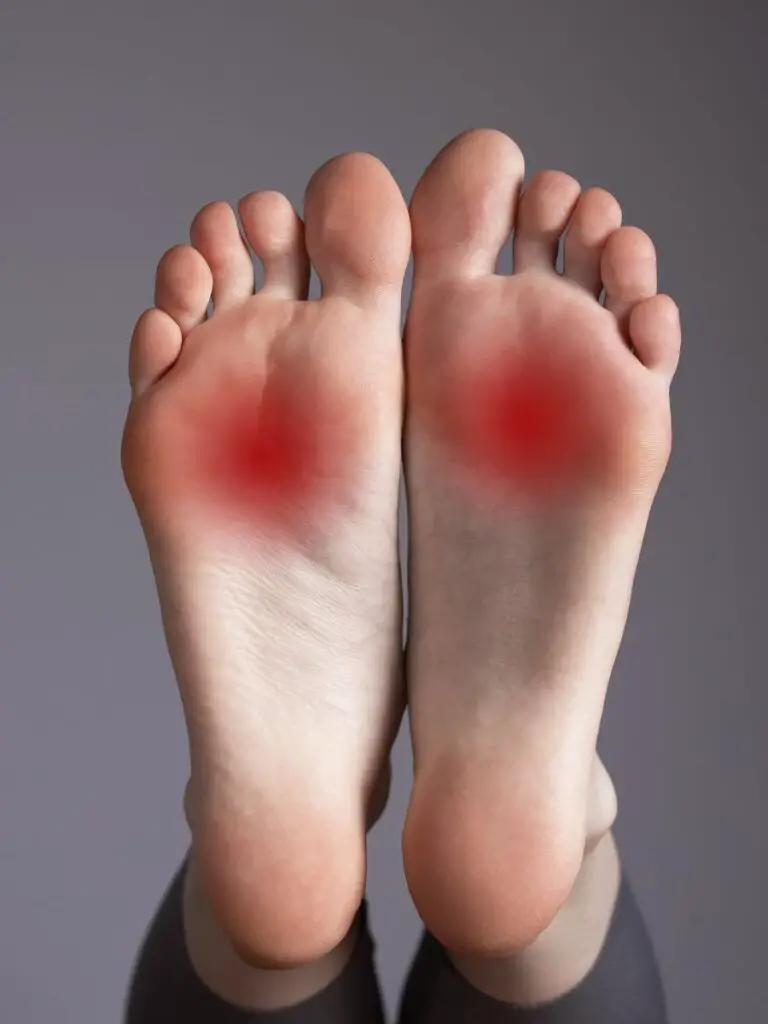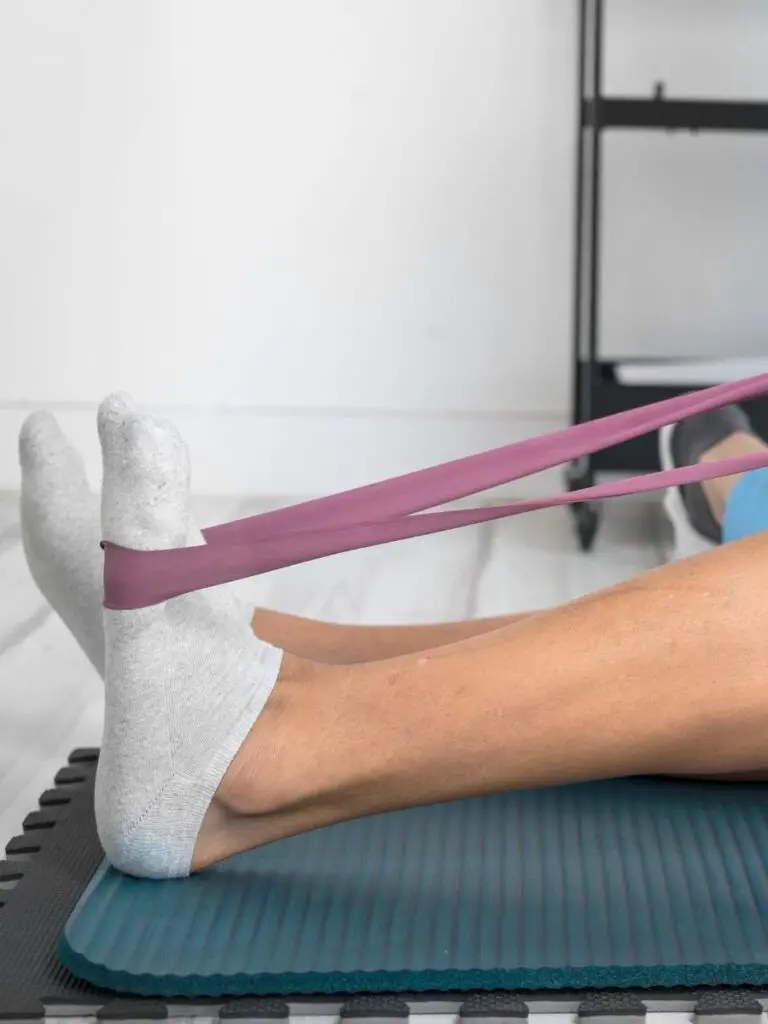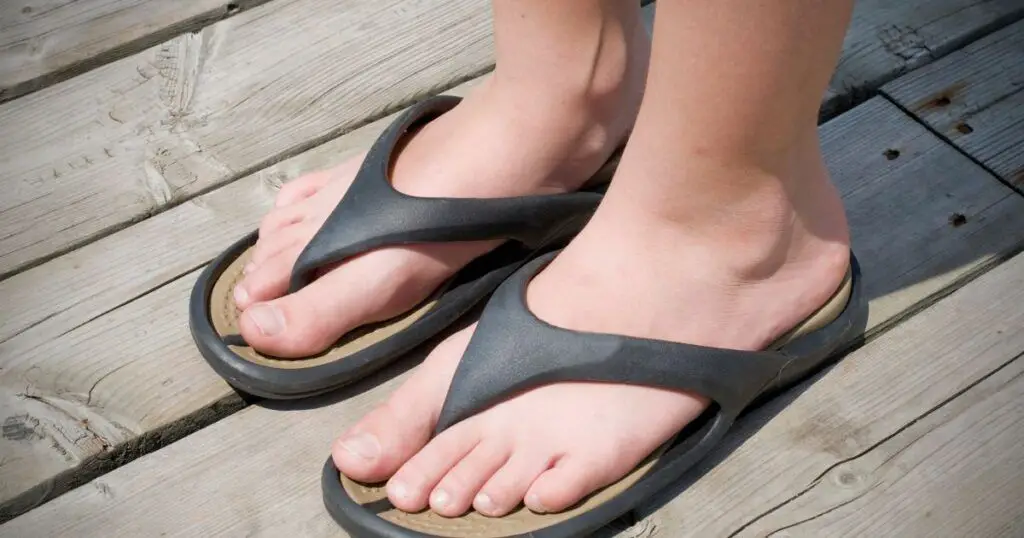As an Amazon affiliate, I may earn from qualifying purchases. Please read our Disclaimer and Privacy Policy.
I’ve been looking for the best shoes for a high arch for a long time. I’m 56 years old, and I don’t want to wear shoes that look like I got them at “Forever 81”.
No offence to anyone in their 80’s.
I wore terrible shoes last summer, like a dummy. Now I’m paying the price. Without any kind of supportive fit, I ended up with plantar fasciitis and chronic lower back pain. Now I’m seeing a physical therapist to strengthen my left foot and stabilize my hips.
All of this is because of unsupportive shoes with no proper arch support. Clearly, I need a great shoe made for higher arches.
There are many shoes on the market, but they’re ugly. Yes, I know that healthy feet are more important than pretty shoes. But it’s the 21st century. Why can’t we have both?
In this blog post, I’m going to take you through my own shopping experience to save you the headache. It’s not easy, but I think you’ll be happy with the choices offered below.
The Anatomy of High Arches
Your feet are the foundation of your body, like the base of a building.
If there’s any instability in the foundation, it throws everything off balance. That’s exactly what happens to people with high arches. Essentially, there is less surface area of your foot hitting the ground when you walk or stand.
So, all that pressure and shock from every step gets concentrated in smaller spots, like the ball of your foot or your heels.
Ouch, right? That can lead to a whole bunch of issues, from achy feet and sore arches to problems with your Achilles tendon and even stress fractures in your bones.
Plus, it’s not just about your feet—it can mess with your whole body’s alignment, causing issues like knee or back pain.
In individuals with pes cavus, the arch of the foot is abnormally raised, leading to increased weight-bearing on the heel and ball of the foot.
This can result in excessive pressure and stress on the metatarsal bones, toes, and heel, potentially leading to various foot problems and discomfort.
Problems When You Don’t Wear a Shoe For a High Arch
I have ridiculously high arches! For that reason, most comfortable shoes just aren’t good enough. My shoes need to have shock absorption, extra support, and extra stability in the heel.
High-arched feet can be a source of significant discomfort and come with their own set of challenges that can affect daily life and mobility.
People with unusually high arches tend to really suffer with everything from occasional foot pain to permanent structural changes in the anatomy.
In some people, high arches may be a symptom of an underlying condition, such as:
- cerebral palsy
- muscular dystrophy
- spina bifida
- polio
- stroke
- spinal cord tumors
Of course, there are many people who were simply born with high arches. You can’t change your anatomy, but you can change your footwear!
Metatarsalgia

This condition is characterized by pain and inflammation in the ball of the foot. The metatarsal bones are the long bones in the midfoot that connect the toes to the arch of the foot.
When excessive pressure or stress is placed on these bones, it can lead to irritation, inflammation, and pain in the surrounding soft tissues.
High-impact activities like running, jumping, or participating in high-impact sports can place increased stress on the metatarsal bones.
Foot deformities, ill-fitting footwear, and overuse or repetitive stress can lead to the condition.
Claw Toes
Claw toes are a condition where one or more of the toes bend abnormally at the middle joint, causing them to resemble a claw or talon.
High arches can contribute to the development of claw toes by altering the distribution of weight on the foot.
When the arch is higher than normal, it can cause the tendons and muscles in the toes to become imbalanced, leading to a tightening of the toe joints and causing them to curl downward.
This can result in pain, discomfort, and difficulty wearing shoes.
Treatment for claw toes may include wearing supportive footwear, performing toe-stretching exercises, using orthotic inserts, and, in severe cases, surgical correction to realign the toes.
Hammer Toe
Hammer toe is a condition where one or more toes become bent at the middle joint, causing them to resemble a hammer or claw.
High arches can contribute to the development of hammer toe by altering the distribution of weight on the foot, which can cause the tendons and muscles in the toes to become imbalanced.
Over time, this imbalance can lead to the toe joints becoming permanently bent. Other factors that can contribute to hammer toe include wearing ill-fitting shoes, foot injuries, and genetic predisposition.
Treatment for hammer toe may include wearing supportive footwear, performing toe-stretching exercises, using orthotic inserts, and, in severe cases, surgical correction to realign the toe joints.
Ankle Instability
High arches can contribute to ankle instability through alterations in foot biomechanics and weight distribution.
When someone has high arches, their feet may not make as much contact with the ground during movement, leading to reduced surface area for weight distribution. This can result in an uneven distribution of forces and increased pressure on specific areas of the foot, including the outer edges.
Ankle instability can develop when the foot’s natural ability to absorb shock and adapt to uneven surfaces is compromised.
Additionally, high arches may be associated with tightness or weakness in certain muscles and tendons of the foot and ankle. For example, the Achilles tendon, which connects the calf muscles to the heel bone, may become tight in individuals with high arches.
This tightness can affect ankle flexibility and predispose the ankle to instability.
Why You Need Shoes For a High Arch and Nothing Else
Wearing the wrong shoes when you have high-arched feet can have a significant impact on your comfort, foot health, and overall well-being.
Trust me; I know! It only took a couple of months of not wearing the right shoes to develop serious pain and problems.
High arches require adequate support and cushioning to help distribute pressure evenly across the foot and absorb shock during walking or running.
Did you know that ill-fitted shoes can alter the way you walk? That can increase the risk of overpronation (foot rolls inward excessively during walking) or supination (foot rolls outward excessively when walking). If this happens, you end up with further strain on the feet, ankles, and lower limbs.
Therefore, it’s essential for individuals with high arches to choose footwear specifically designed to accommodate their foot type, providing the necessary support and cushioning to promote optimal foot health and minimize the risk of complications.

5 Best Shoes For High Arches That Don’t Look Like They Come From “Forever 81”
When it comes to managing the challenges of high-arched feet, choosing the right footwear can make all the difference.
Look for shoes specifically designed with features such as arch support, cushioning, and ample room in the toe box to accommodate the unique needs of high arches.
Brands that specialize in orthopedic or athletic footwear often offer options tailored to address these concerns.
The following suggestions are based on recommendations from the American Podiatric Medical Association (some brands). They include shoes designed for good foot health and engineered for great arch support.
Ultimately, the type of shoes you buy will be your own personal preference.
Hoka Clifton
These shoes are built with loads of cushioning and support, perfect for high-arched runners who need some extra TLC for their feet.
The cushioned footbed helps absorb all that shock and pressure that can wreak havoc on high arches, keeping your feet happy mile after mile.
Plus, they’ve got this nifty thing called an “early stage Meta-Rocker,” which basically means they help your foot roll smoothly from heel to toe, taking some of the strain off your arches and keeping you moving with ease.
Technically, they’re considered a neutral shoe. However, the Clifton 9’s include high arch support and a heel cup for stability. People with high arches need stability around the heel, and these shoes do the trick.
Brooks Ghost
Brooks Ghost shoes are APMA approved and are a top pick for folks with high arches.
They offer ample cushioning and support, which helps distribute pressure evenly and reduces strain on the arches. Plus, they provide a smooth ride, making them a comfortable option for runners looking to log miles without discomfort. If you’re in the market for athletic shoes that prioritize support and comfort for high arches.
Podiatrists recommend this athletic shoe for running, walking, or even everyday wear.
New Balance Fuel Cell Rebel V2
The New Balance Fuel Cell Rebel V2 shoes are a sleek option for runners aiming for both style and performance.
They’re engineered with Fuel Cell technology, providing a responsive feel that propels you forward. Not only that, but they’re also impressively lightweight, ensuring you can move swiftly without feeling bogged down.
Whether you’re pounding the pavement or hitting the trails, these shoes offer the support and agility you need to conquer your runs.
Saucony
Saucony sneakers are considered good for high arches due to their supportive features and cushioning technology.
Many Saucony models are designed with ample arch support and a cushioned midsole that provides shock absorption, which is crucial for individuals with high arches who may experience increased pressure on the ball of the foot and heel.
Additionally, Saucony offers a range of shoe options with different levels of stability and cushioning, allowing individuals to find the right balance of support and comfort for their specific foot type and activity level.
The brand’s commitment to innovation and performance ensures that individuals with high arches can find sneakers that accommodate their needs and help them stay comfortable during various activities.
Brooks Adrenaline GTS
This shoe is great for foot stability and support. They’re perfect for long runs because of the cushioned midsole and reliable arch support.
One of the key features of the Adrenaline GTS is its Progressive Diagonal Rollbar (PDRB), which helps guide the foot through its natural gait cycle and prevents overpronation—an issue commonly associated with high arches.
This shoe also offers ample cushioning in the midsole, providing shock absorption and comfort for the entire foot, including the high arches. You’ll also get an engineered mesh upper to ensure a snug but breathable fit.
Asics Gel Nimbus
I used to be a runner, and the Asics Gel Nimbus was the only sneaker I could wear.
These shoes are known for their plush feel and excellent shock absorption, making them a go-to option for long-distance runs or everyday training sessions.
With a supportive midsole and a snug yet breathable fit, the Gel Nimbus provides a smooth ride that keeps your feet feeling fresh mile after mile.
Whether you’re logging serious mileage or just enjoying a leisurely jog, the Asics Gel Nimbus delivers the comfort and performance you need, no gimmicks, just solid reliability.
Honestly, I could never have run without this particular brand. To this day, I still buy Asics Gel Nimbus, even for just walking
Wolky – WINNER FOR ME!
Wolky shoes are crafted with precision by shoe experts who understand the unique needs of high arches. In fact, my physiotherapist recommended these shoes for me. They’re a little pricey, but they’re an investment in your health.
I need my feet to get me places, and if I keep wearing terrible shoes, I’m going to have chronic and debilitating pain.
Nobody wants that. I don’t want that.
I like the look of these shoes. They’re stylish, and they come in a variety of colors. The best thing is that they don’t make me look older than I already am.
Top Wolky Shoe Features
- High arch support
- Stability
- Cushioning
- Adjustable straps
- Customizable fit
- Do not cause pressure points or constriction
- Engineered with a removable insole to fit custom orthotics
- Rubber sole for traction and durability
Dansko – ANOTHER WINNING SHOE!
Physiotherapists recommend the Dansko brand for people with high arches. My physiotherapist suggested these to me, along with Vionic, and Wolky brands.
If you’re suffering from the negative effects of high arches, Dansko shoes might be a good choice for you. These might very well be on my list for the next pair of shoes I get.
Other benefits of Dansko shoes include:
- Contoured footbed for arch support
- Pressure is distributed evenly across the foot
- Roomy toe box
- Sturdy construction
- Made with durable materials to last a long time
- Slip-resistant outsole
Chaco – CAN’T BEAT THE STYLE AND FUNCTIONALITY
Chaco sandals are a fantastic option for individuals with high-arched feet, offering both style and unparalleled support. These sandals are designed with a contoured footbed that provides excellent arch support, helping to alleviate discomfort and promote proper foot alignment.
One of the standout features of Chaco sandals is their adjustable strap system, which allows for a customized fit to accommodate the unique shape of your feet.
This feature is particularly beneficial for individuals with high arches, as it ensures a secure and comfortable fit without causing pressure points or slippage.
Other benefits of Chaco shoes for high arches include the following:
- Constructed with durable materials
- Rugged outsole make them perfect for outdoor activities
- They are podiatrist-certified
- Adjustable strap for customized comfort
Chaco sandals are an excellent choice for individuals with high-arched feet who are seeking supportive footwear for both outdoor adventures and everyday wear. With their contoured footbed, adjustable strap system, and durable construction, Chaco sandals provide the perfect blend of style and functionality for active individuals.
Teva
Teva sandals are a go-to option for those with high-arched feet. They offer a blend of comfort, style, and versatility while catering to the needs of individuals seeking support and stability.
One of the key features of Teva sandals is their contoured footbed, which provides excellent arch support to help alleviate discomfort and promote proper alignment. This is particularly beneficial for individuals with high arches, as it helps distribute pressure evenly across the foot.
Other benefits of Teva shoes for a high arch include the following:
- Adjustable straps
- Do not create pressure points
- Offer stability and arch support
- Made with durable materials
- Rugged outsoles for outdoor activity
- Quick-drying material
- Water-friendly design
These shoes are a great option for active people who need proper shoes for a high arch.
Vionic
For individuals with high arches seeking the best walking shoes and flat shoes, Vionic is a brand worth considering.
Vionic specializes in orthotic footwear designed to provide superior support and comfort for various foot types, including high arches.
Vionic offers a wide range of walking shoes with built-in orthotic support, featuring contoured footbeds and ample arch support to promote proper alignment and alleviate discomfort associated with high arches.
Their walking shoes are crafted with cushioned midsoles and durable outsoles, ensuring optimal shock absorption and stability during long walks or everyday wear.
Additionally, Vionic offers stylish flat shoes with the same orthotic technology, making them an excellent choice for individuals seeking comfortable yet fashionable footwear. Whether you’re dressing up for work or running errands around town, Vionic flat shoes provide the support and comfort you need to stay on your feet all day.
Don’t Be a Dummy Like Me!
I waited too long to get my feet checked and ended up doing some damage. If I had worn proper shoes last summer, I wouldn’t have ended up needing physiotherapy and strengthening exercises.
If you’re looking for shoes with a high arch, give the options in this post consideration. My favorites are the Wolky, Dansco, and Chaco, although the others are perfectly fine.
Ultimately, you have to choose shoes that support your lifestyle. I opted to get an athletic pair of shoes along with a pair of Wolky sandals. I’m looking forward to pain-free walking this summer!

